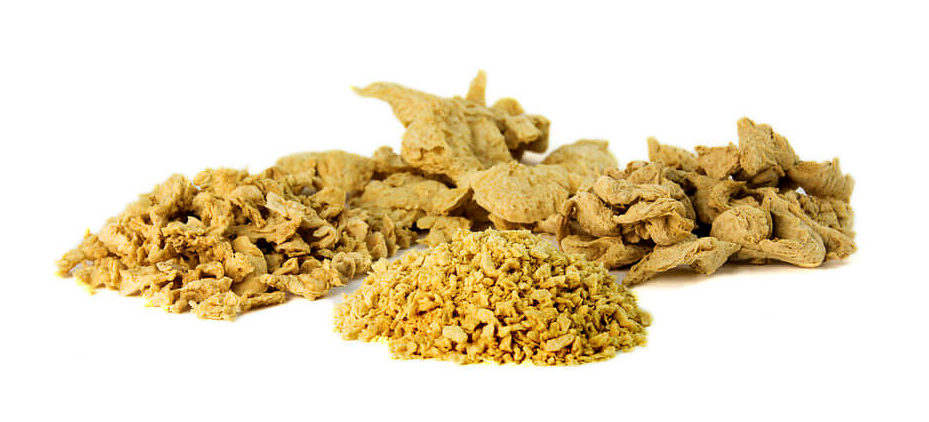TSP Production: ExPress® Soy vs. Hi-Pro (Solvent) Meal

A common question that arises when a company analyzes making texturized soy protein (TSP) is whether to make it from expeller or Hi-Pro (Solvent meal).
Below is a breakdown of the main comparisons between the production of ExPress® vs Hi-Pro for making TSP:
|
TSP ExPress® |
TSP Hi-Pro | |
| Capacity | 500-750 lbs/hr | 300-350 lbs/hr |
| Absorption Rate | 3.2 to 4 times its weight in water | 2.8 to 3.2 times its weight in water |
| Additives | Not Needed (around 50 PDI) | Normally Needed (low PDI, around 25) |
| Extruder Options | MS3000 Medium Shear Model (meat extender and chicken imitation pieces)
2000 High Shear Model (meat extender) |
Only 2000 high shear model (meat extender) |
| Market Limitations | None | Some markets less willing to purchase TSP made with hexane and additives |
| Ease of Use | Option of MS3000 is a more automated process | 2000 with solvent meal may require extra cutter head on extruder barrel (if PDI is too low) |
| Boiler (gas connection) | Needed (Used for preconditioner) | Can use a mixer which does not require steam |
| Products | Preconditioner is located on top of the extruder, reducing footprint | Only meat extender (no shapes) |
| Footprint | Preconditioner is located on top of the extruder, reducing footprint | Mixer generally located in its own area, requiring more space |
| Control Panel | Touch Screen | Analog |
| TSP Color | Light to medium color | Tends to be lighter in color |
The ExPress® extrusion line with medium shear extrusion as it has the added benefits:
- Control of the whole quality chain process (from bean to TSP, controlling your meal)
- Insta-Pro extruders offer almost double the production capacity when using ExPress® instead of Hi-Pro as an ingredient
- Absorption rate much higher between 3.2 to 4 instead of 2.8 to 3.2
- Gives the option to use the MS3000 medium shear to make both type of TSP: extender & replacement.
If you have any questions, please don’t hesitate to contact us! Would love to help introduce you to the opportunities of TSP production.



